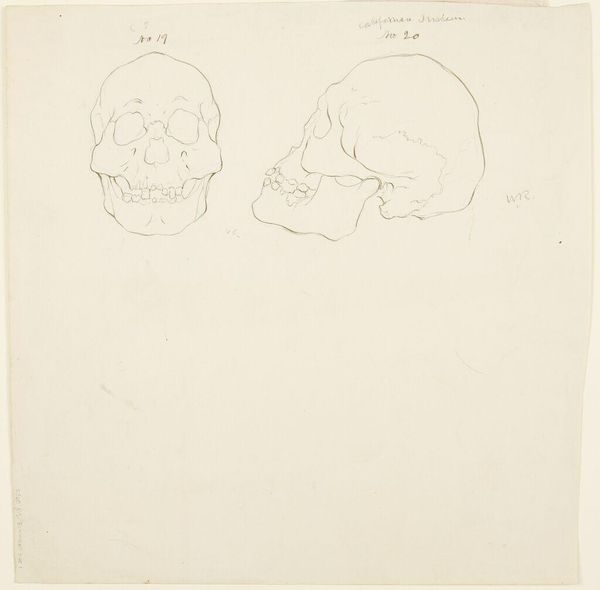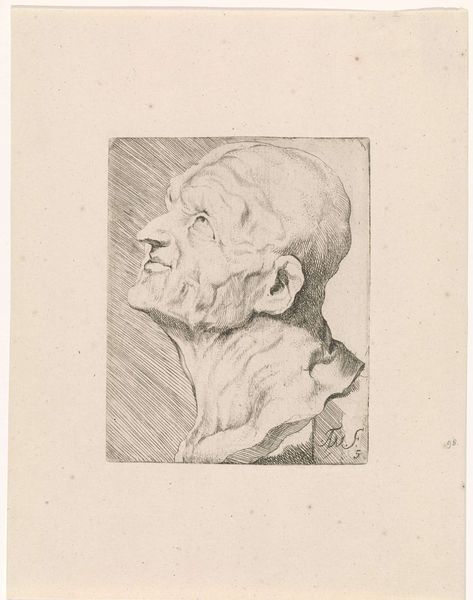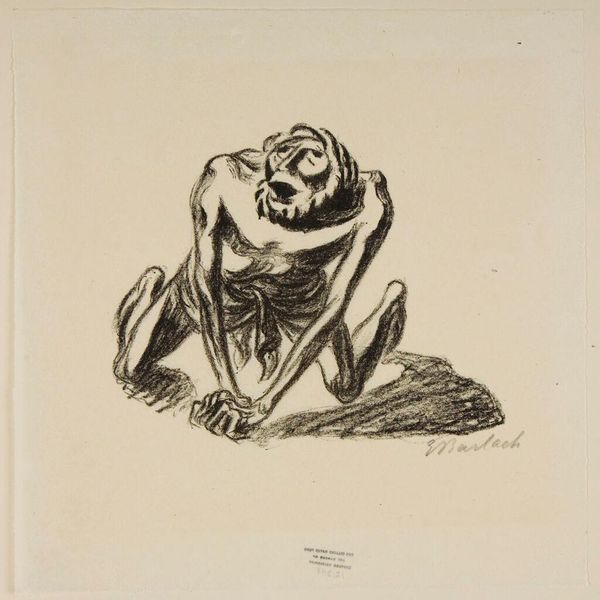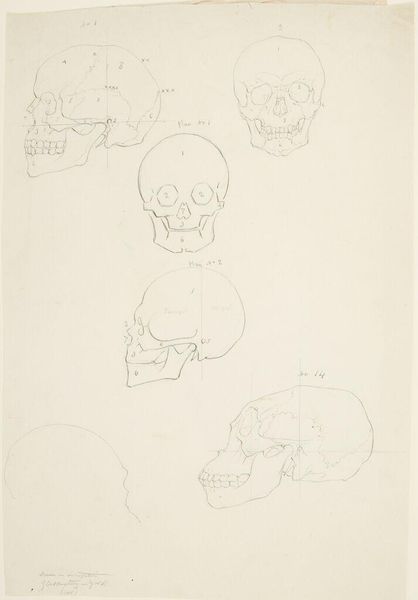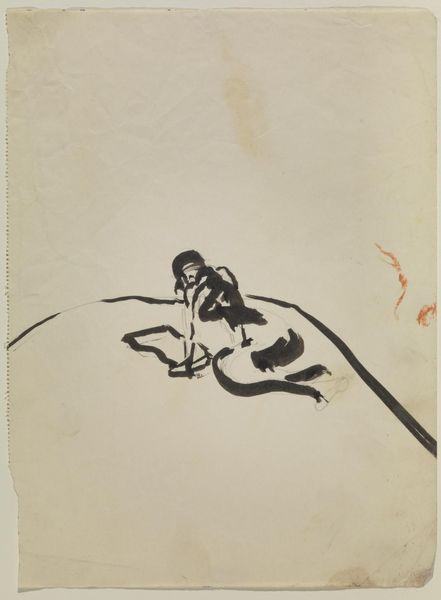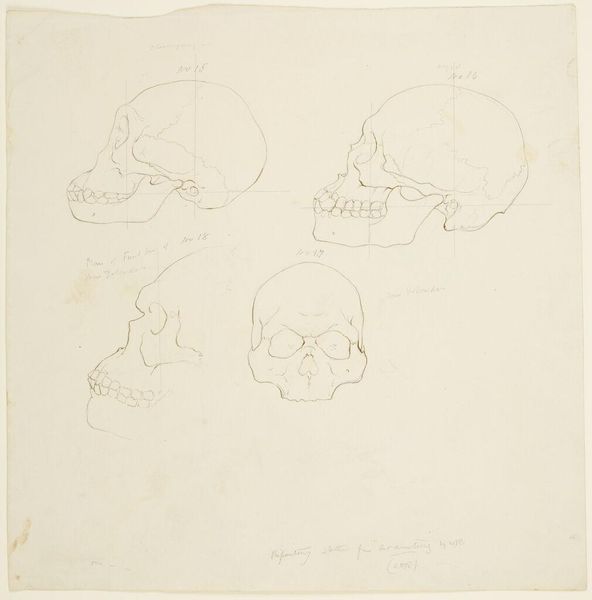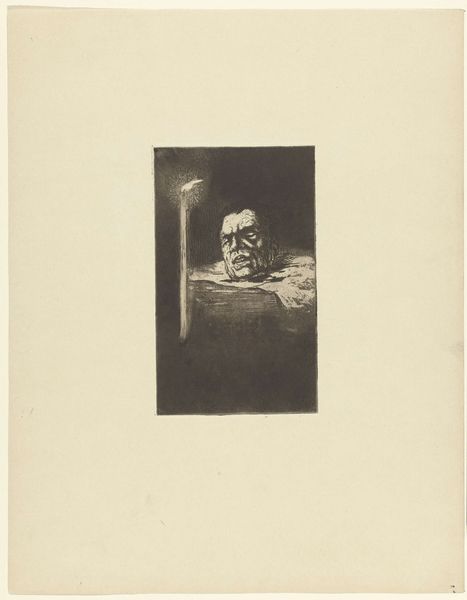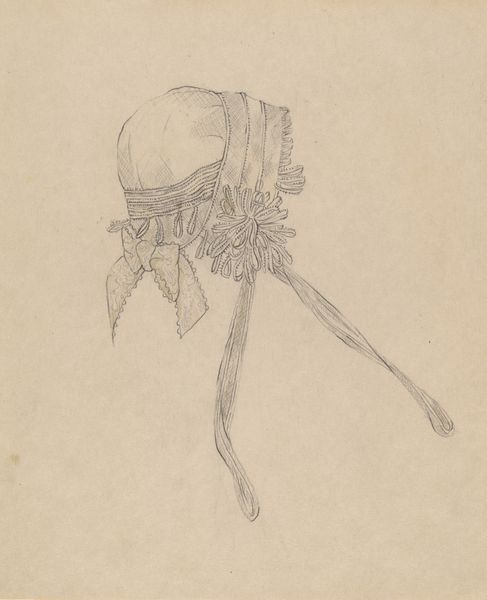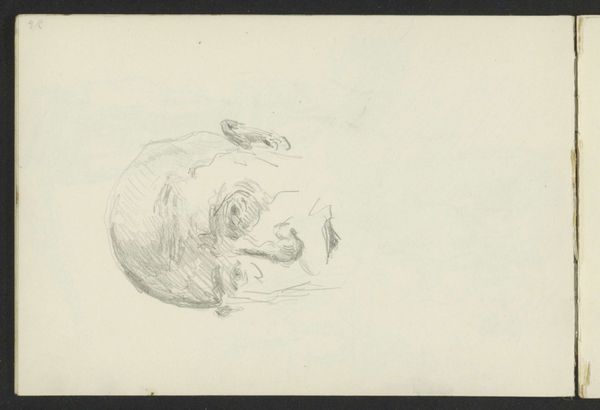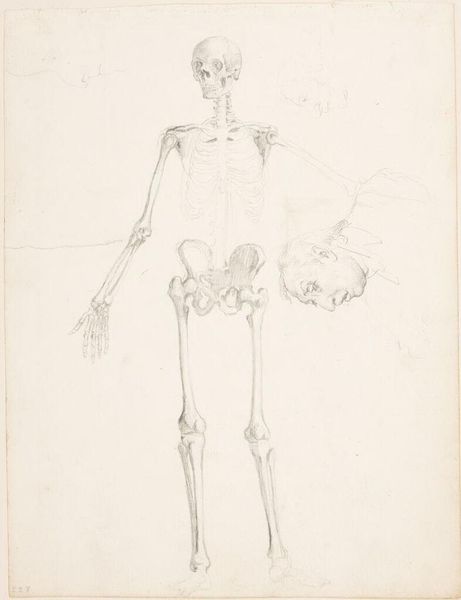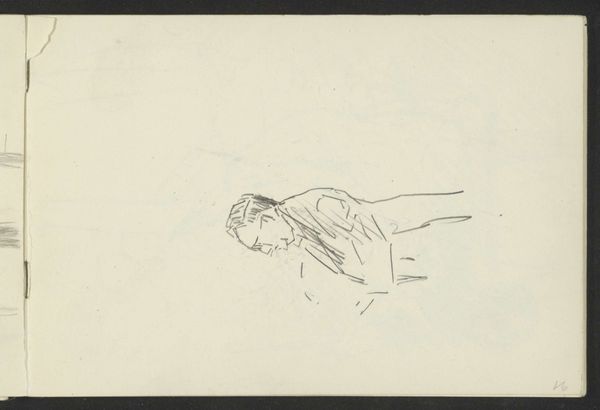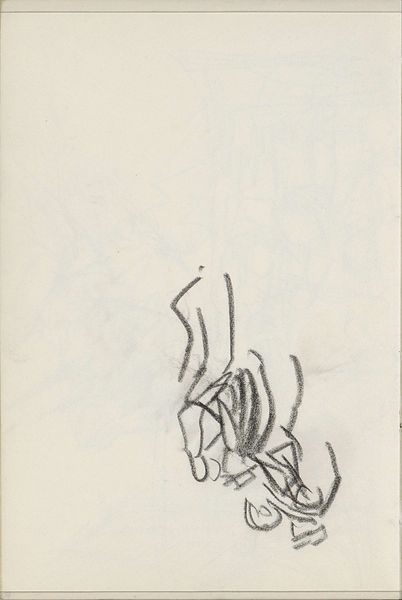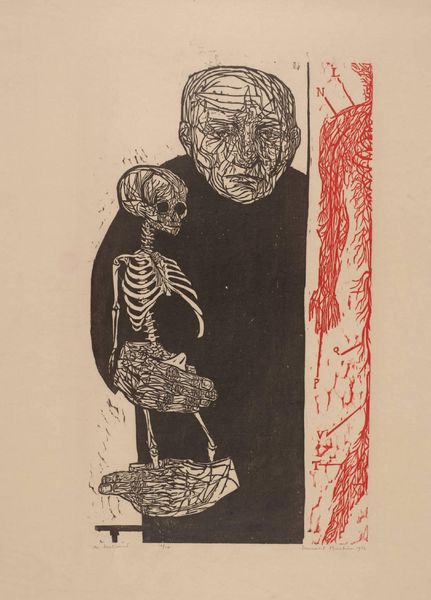
Dimensions: height 275 mm, width 215 mm
Copyright: Rijks Museum: Open Domain
F. Ockerse’s drawing presents a human skull impaled on a stick, set amidst stylized tufts of grass. The skull, stark and blueish, evokes the memento mori tradition, reminding us of the transience of life. This image of mortality echoes across cultures and centuries. Consider the skull as a symbol, from the vanitas paintings of the Dutch Golden Age to its appearance in indigenous rituals. In some cultures, displaying skulls was a practice intended to honor ancestors or ward off evil spirits, deeply rooted in a primal confrontation with death. The psychoanalytic perspective sees in this image a manifestation of the death drive, a subconscious acknowledgment of our mortality. The skull, mounted on a stick, becomes a potent, even unsettling symbol, prompting introspection on existence. How do we confront our own inevitable demise? The skull, a universal emblem, continues to evolve, its meanings shaped by our changing perceptions of life and death. Its recurrence invites reflection on the cyclical nature of human existence and the enduring power of symbols to connect us to our deepest fears and aspirations.
Comments
No comments
Be the first to comment and join the conversation on the ultimate creative platform.

